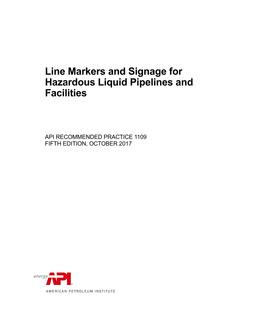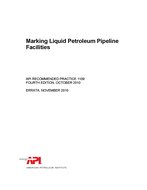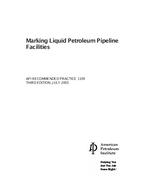Click here to purchase
This recommended practice addresses the permanent marking of liquid petroleum pipeline transportation facilities. It covers the design, message, installation, placement, inspection, and maintenance of markers and signs on pipeline facilities located onshore and at inland waterway crossings. Markers and signs indicate the presence of a pipeline facility and warn of the potential hazards associated with its presence and operation. The markers and signs may contain information to be used by the public when reporting emergencies and seeking assistance in determining the precise location of a buried pipeline.
The provisions of this recommended practice cover the minimum marker and sign requirements for liquid petroleum pipeline facilities. Alternative markers, which are recommended for some locations under certain circumstances, are also discussed. The pipeline operator is responsible for determining the extent of pipeline marking. Consideration should be given to the consequences of pipeline failure or damage; hazardous characteristics of the commodity being transported; and the pipeline?s proximity to industrial, commercial, residential, and environmentally sensitive areas. The pipeline marking programs are also integral parts of the pipeline operator?s maintenance and emergency plans.
This recommended practice is not intended to be applied retroactively. Its recommendations are for new construction and for normal marker maintenance programs subsequent to the effective date of this edition.
Product Details
- Edition:
- 5th
- Published:
- 10/01/2017
- Number of Pages:
- 24
- File Size:
- 1 file , 3.2 MB
- Redline File Size:
- 2 files , 6.9 MB
- Product Code(s):
- D11095, D11095, D11095, D11095, D11095, D11095
- Note:
- This product is unavailable in Cuba, Iran, North Korea, Syria


